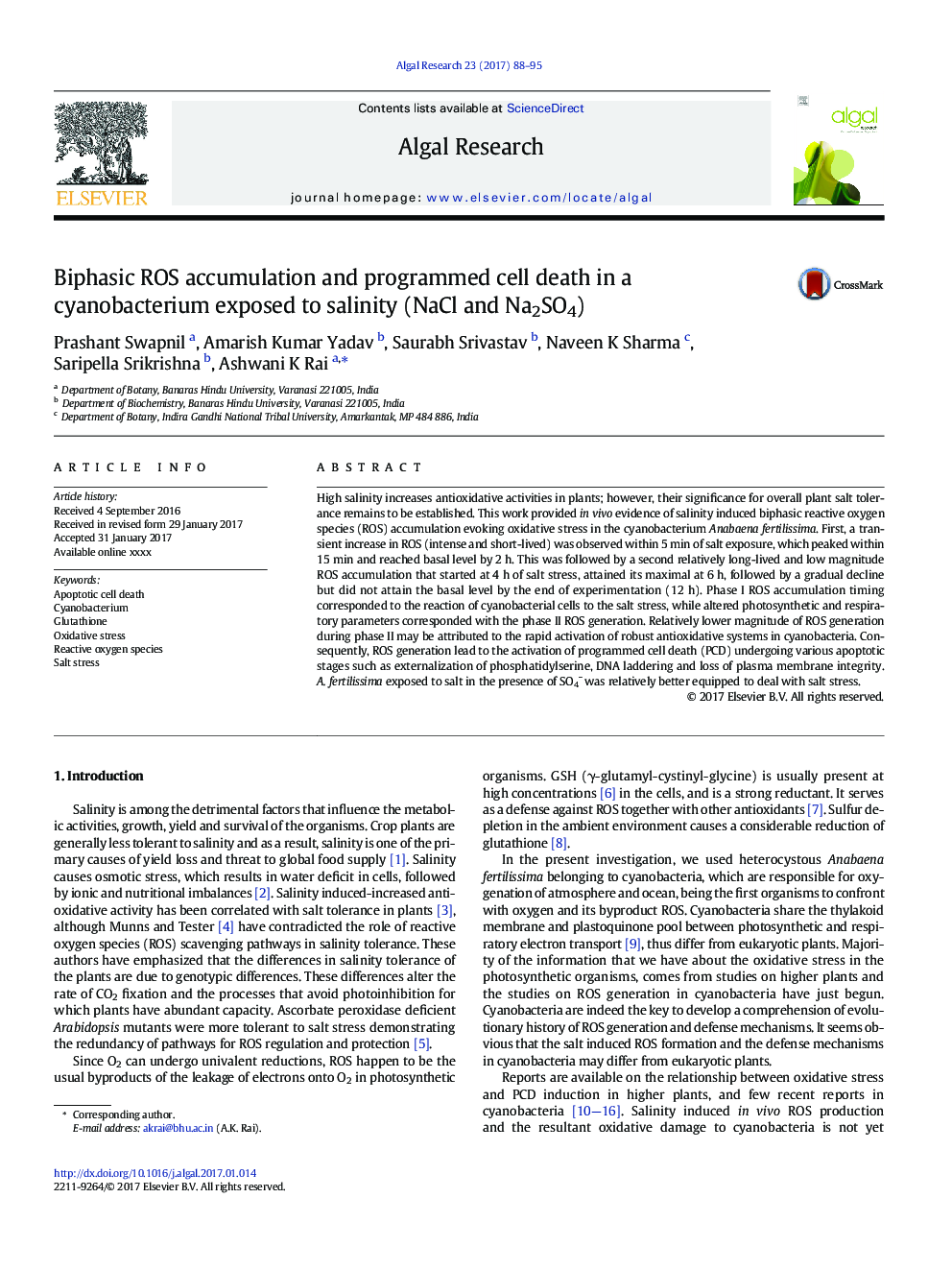| Article ID | Journal | Published Year | Pages | File Type |
|---|---|---|---|---|
| 5478325 | Algal Research | 2017 | 8 Pages |
Abstract
High salinity increases antioxidative activities in plants; however, their significance for overall plant salt tolerance remains to be established. This work provided in vivo evidence of salinity induced biphasic reactive oxygen species (ROS) accumulation evoking oxidative stress in the cyanobacterium Anabaena fertilissima. First, a transient increase in ROS (intense and short-lived) was observed within 5 min of salt exposure, which peaked within 15 min and reached basal level by 2 h. This was followed by a second relatively long-lived and low magnitude ROS accumulation that started at 4 h of salt stress, attained its maximal at 6 h, followed by a gradual decline but did not attain the basal level by the end of experimentation (12 h). Phase I ROS accumulation timing corresponded to the reaction of cyanobacterial cells to the salt stress, while altered photosynthetic and respiratory parameters corresponded with the phase II ROS generation. Relatively lower magnitude of ROS generation during phase II may be attributed to the rapid activation of robust antioxidative systems in cyanobacteria. Consequently, ROS generation lead to the activation of programmed cell death (PCD) undergoing various apoptotic stages such as externalization of phosphatidylserine, DNA laddering and loss of plasma membrane integrity. A. fertilissima exposed to salt in the presence of SO4¯ was relatively better equipped to deal with salt stress.
Keywords
Related Topics
Physical Sciences and Engineering
Energy
Renewable Energy, Sustainability and the Environment
Authors
Prashant Swapnil, Amarish Kumar Yadav, Saurabh Srivastav, Naveen K Sharma, Saripella Srikrishna, Ashwani K Rai,
